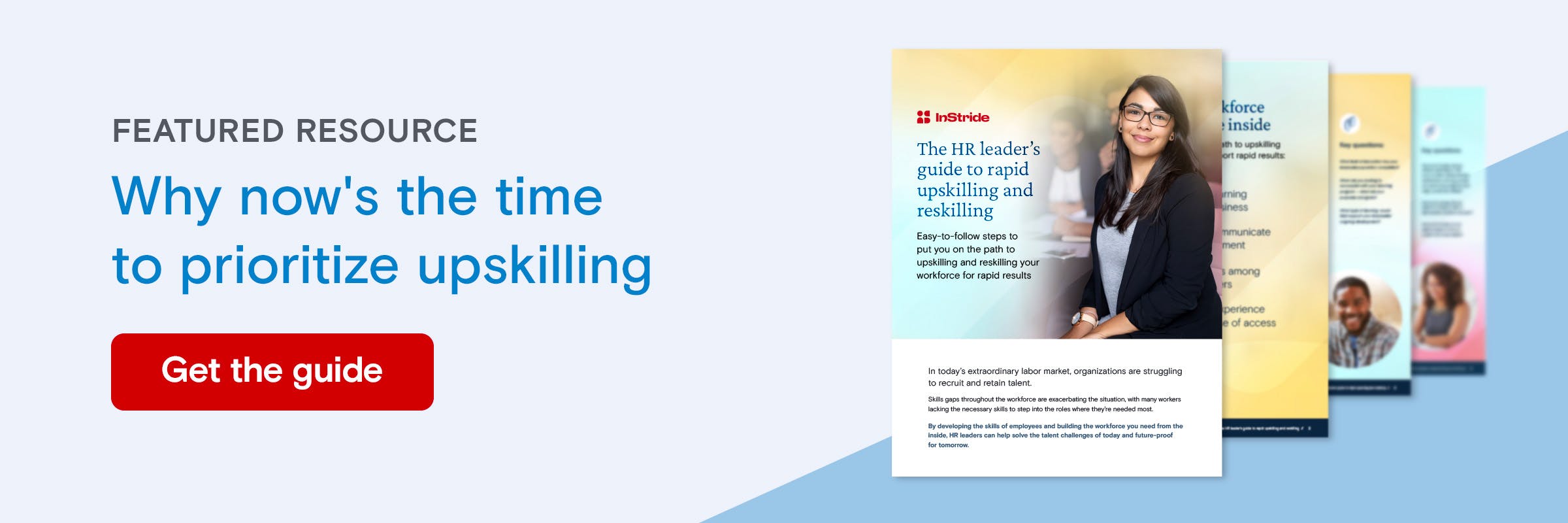A successful business hinges on a skilled and competent workforce. HR professionals are at the forefront of cultivating a workforce that can meet current and future business needs.
However, it’s impossible to build a skilled workforce without first knowing which skills and competencies they need the most to be successful. Competency frameworks are a powerful tool that can help you gain this knowledge.
What is a competency framework?
A competency framework maps the skills and knowledge required to perform the responsibilities of a given role or advance from one role to another. Think of it as a blueprint for the success of a specific role.
Clear competency frameworks ensure everyone, from HR to people managers and employees, understands the skills needed for a role, promoting alignment across different functions.
The benefits of competency frameworks
Developing a competency framework provides benefits that support a variety of talent goals — from recruitment to L&D and more. Here’s how.
Talent attraction and hiring
Understanding the skills and competencies required to succeed in a specific role leads to better hiring decisions. When armed with a powerful competency framework, recruiters and hiring managers can go into the hiring process knowing exactly what to look for in prospective job candidates.
This is especially useful if your organization is moving towards skills-based hiring, which relies even more heavily on skills and competencies than traditional methods of hiring that prioritize educational background.
Learning and development
Competency frameworks bring clarity to learning and development. When you have a strong understanding of the skills required to be successful in various job functions, you can build targeted L&D initiatives to develop those skills.
Employee advancement
With a competency framework, employees have visibility into exactly what skills are needed to be successful in a role. Having this knowledge can help them to facilitate conversations with their managers about how to advance to a higher level or reskill into a new role entirely.
This is especially useful for succession planning. Employers can use competency frameworks to pinpoint high-potential talent early on and ensure that they’re on the right path to developing the skills they need to eventually take on an advanced role.
Key components of a competency framework
It’s important to strike the right balance when developing your competency framework. A framework that’s too broad won’t provide the clarity and direction needed for your intended goals, while a framework that’s too narrow will end up being too time-consuming and resource-intensive.
Finding the right balance depends on your business’s unique needs, but here are some suggestions for components you can include to set the basic foundation for your competency framework.
Skills and competencies
Before we dive in, let’s first note the difference between skills and competencies:
A skill is a concrete ability that enables an individual to perform tasks related to a job. Skills can be specific to a particular job, company or technology, and as these evolve, so too will the requisite skills.
A competency is a broader ability that includes a mix of acquired knowledge, behaviors, attitudes and life experiences that enable an individual to complete a job. Competencies typically take a longer time to master and may encompass groups of skills.
These terms are often used interchangeably, but knowing the distinction helps ensure that your competency framework is accurate.
Core values
Core values provide a guiding principle for all members of your organization. Every employee, no matter their level, is expected to perform their work with core values in mind.
For instance, delivering exceptional service might be a core value for businesses in the quick-service restaurant industry. Environmentally-focused businesses may have sustainability in their core values.
Core competencies
Core competencies include the broad abilities that are key to the work of an organization. For example, your organization might list communication, teamwork and learning as core competencies that every employee should master.
Functional competencies
Functional competencies refer to skills and competencies that are specific to each role. The functional competencies for HR roles might include communication, project management and confidentiality, whereas those for engineering roles might include specific technical skills and coding languages.
Leadership competencies
Leadership competencies pertain to those in leadership positions. Employees at a higher level in the organization need to demonstrate competencies that will steer the business and its employees in a positive direction. These might include stakeholder management, strategic knowledge, partnership building and so on.
Meta competencies
Meta competencies are skills and competencies that are valued broadly, not just in the specific context of your business. These include competencies like adaptability, learning and resilience.
Competency frameworks set the vision for success
A competency framework is not another corporate gimmick. They’re powerful tools that help HR teams make smarter decisions about hiring, career advancement and L&D. They also help keep employees and people managers on the same page about what is needed for success.
Discover more HR resources: A competency framework can reveal skills gaps within your workforce. Download this free skills gaps analysis template to get started


